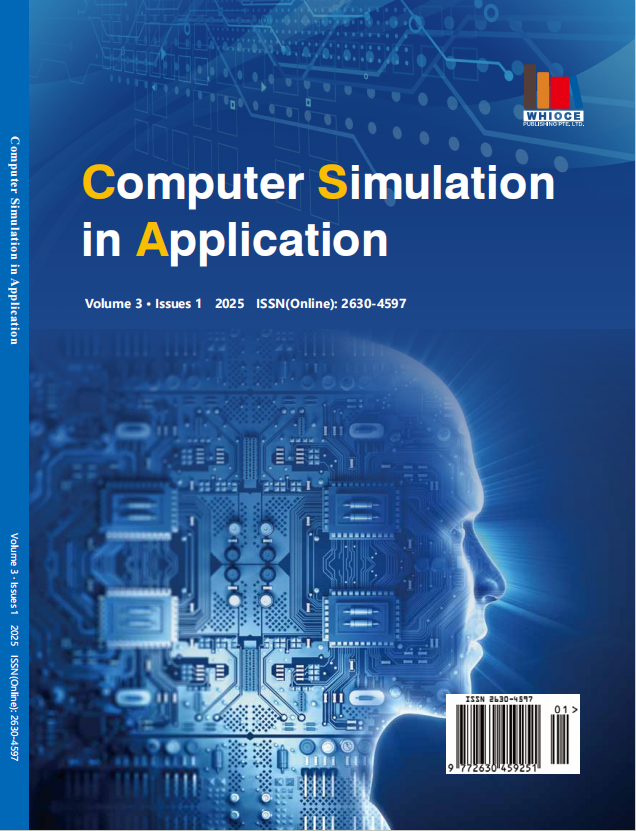Research on Integrated Sensing and Communication Technology of Unmanned Aerial Vehicles
DOI:
https://doi.org/10.18063/csa.v3i1.915Keywords:
Integrated sensing and communication, UAV swarms, cooperative sensingAbstract
In response to the demands of 6G space-air-ground integrated networks and the development of low-altitude economy, the integrated sensing and communication (ISAC) technology for unmanned aerial vehicles (UAVs) has emerged as a novel core solution that combines wireless transmission and sensing functions. With the advantages of strong mobility and flexible deployment, UAV swarms combined with ISAC, can significantly enhance system performance. However, the ISAC for UAV swarms still faces three major challenges: difficult physical layer transmission design, difficult cooperative networking, and difficult joint scheduling of multiple tasks. To address these challenges, this paper proposes key technologies such as deep reinforcement learning, multi-sensor fusion, and parameter estimation, focusing on breakthroughs in transmission design, cooperative networking, and joint optimization of communication and sensing resources for ISAC for UAV swarms, promoting theoretical innovation and system implementation for low-altitude economy applications in the 6G era.
References
IMT-2030 (6G) Promotion Group,White Paper on the overall Vision and Potential Key Technologies of 6G, 2021.
M. Sheng, D. Zhou, W. Bai, J. Liu, and J. Li, “6G service coverage with mega satellite constellations,’’ China Communications, vol. 19, no. 1, pp. 64-76, Jan. 2022.
Y. Liu, X. Yuan, Z. Xiong, J. Kang, X. Wang, and D. Niyato, “Federated learning for 6G communications: challenges, methods, and future directions,” China Communications, vol. 17, no. 9, pp. 105-118, Sep. 2020.
A. Abouaomar, A. Taik, A. Filali, and S. Cherkaoui, “Federated deep reinforcement learning for open RAN slicing in 6G networks,’’ IEEE Communications Magazine, vol.61, no.2, pp.126-132, Jun. 2023.
X. Cheng, D. Duan, S. Gao, and L. Yang, “Integrated sensing and communications (ISAC) for vehicular communication networks (VCN),’’ IEEE Internet of Things Journal, vol. 9, no. 23, pp. 23441-23451, Dec. 2022.
Z. Yu, X. Hu, C. Liu, M. Peng, and C. Zhong, “Location sensing and beamforming design for IRS-enabled multi-user ISAC systems,’’ IEEE Transactions on Signal Proc essing, vol. 70, pp. 5178-5193, May 2022.
IMT-2030 (6G) Promotion Group,White Paper of Research Report on ISAC,2021.
Z. Cui, J. Hu, J. Cheng, and G. Li, “Multi-domain NOMA for ISAC: utilizing the DOF in the delay-Doppler domain,’’ IEEE Communications Letters, vol. 27, no. 2, pp. 726-730, Feb. 2023.
C. Ouyang, Y. Liu, and H. Yang, “Performance of downlink and uplink integrated sensing and communications (ISAC) systems,’’ IEEE Wireless Communications Letters, vol. 11, no. 9, pp. 1850-1854, Sep. 2022.
Lu Zhiyong. Satellite Communication in 6G Network [J]. Digital Communication World, 2020(1):2.
N. Gao, L. Liang, D. Cai, X. Li, and S. Jin, “Coverage control for UAV swarm communication networks: A distributed learning approach,’’ IEEE Internet of Things Journal, vol. 9, no. 20, pp. 19854-19867, Oct. 2022.
[12] L. Bai, Z. Huang, X. Zhang, and X. Cheng, “A non-stationary 3D model for 6G massive MIMO mmWave UAV channels,’’ IEEE Transactions on Wireless Communications, vol. 21, no. 6, pp. 4325-4339, June 2022.
J. Zhao, F. Gao, W. Jia, W. Yuan and W. Jin, “Integrated Sensing and Communications for UAV Communications With Jittering Effect,’’ IEEE Wireless Communications Letters, vol. 12, no. 4, pp. 758-762, Apr. 2023,
Z. Wei, Z. Meng, M. Lai, H. Wu, J. Han, and Z. Feng, “Anti-collision technologies for unmanned aerial vehicles: recent advances and future trends,’’ IEEE Internet of Things Journal, vol. 9, no. 10, pp. 7619-7638, May 2022.
A. A. Salem, M. H. Ismail and A. S. Ibrahim, “Active reconfigurable intelligent surface-assisted MISO integrated sensing and communication systems for secure operation,’’ IEEE Transactions on Vehicular Technology, vol. 72, no. 4, pp. 4919-4931, Dec. 2022.
[16] J. Zou, C. Wang, Y. Liu, Z. Zou, and S. Sun, “Vision-assisted 3-D predictive beamforming for green UAV-to-vehicle communications,’’ IEEE Transactions on Green Communications and Networking, vol. 7, no. 1, pp. 434-443, Mar. 2023.
Li Hujun. Relay System and Multi-node Collaborative Perception Technology Based on Integrated Perception Communication [D]. Beijing University of Posts and Telecommunications, 2023.
Zhang Cheng et al., "Millimeter-wave MIMO Base Station Cooperative Beam Selection Method Based on Broad Learning", CN202211057673.1, 2023.
Ding Ruijin, Gao Feifei, Xing Ling. Intelligent Routing Strategy for the Internet of Things Based on Deep Reinforcement Learning [J]. Journal of the Internet of Things, 2019,3(2):56-63.

